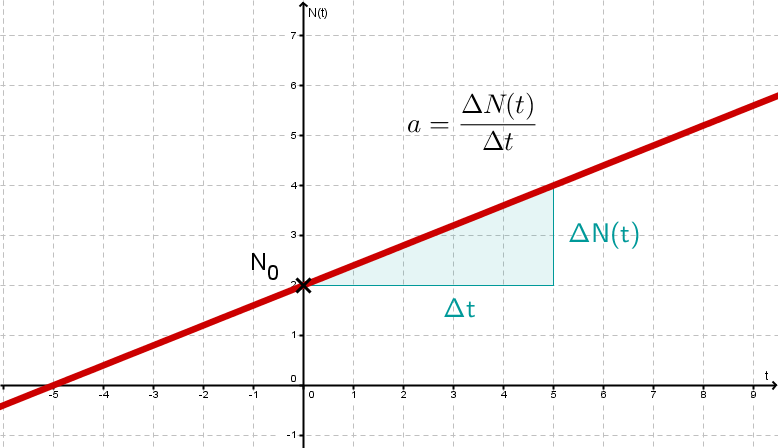Linear Growth
Linear growth or linear decay is present when the change of a value , with the same change over time, is constant.
In other words, the quantity changes by the same amount within equal time intervals. The linear growth function is given by a line equation:
Here we have:
: the number or amount of after time ,
: the rate of change,
: the number or amount of at time , i..e the initial value
Properties
The growth rate or rate of change is constant for linear growth or decay: .
It corresponds to the slope of the graph of the linear growth function.
Monotonicity: If , we speak of linear growth. The function is then strictly monotonically increasing.
If , the function describes linear decay. The function is then strictly monotonically decreasing.
The graph of a linear growth function
As with linear functions, the rate of change is calculated using a gradient triangle.

denotes the difference of the values of at two points in time.
In the figure, this is:
stands for the period of time during which is observed. In the figure:
Example
A tree is planted in a garden. At this point it protrudes from the ground. After how many years will the tree be high if it grows by a year on average?
Solution:
First, write down the given and searched values from the data.
Required is the time at which the tree has reached the size .
Given is the size of the tree at the beginning (= starting value ), its growth rate (= rate of change ) and its size reached after years (= ).
(Note: t is given in years, is the size of the tree in metres.
The tree grows per year, therefore the unit of ).
Now substitute the given values into the functional equation and solve the equation for the we are looking for.
Answer: After 40 years the tree is high.